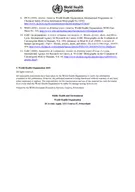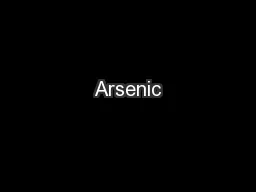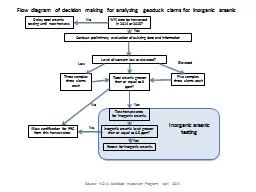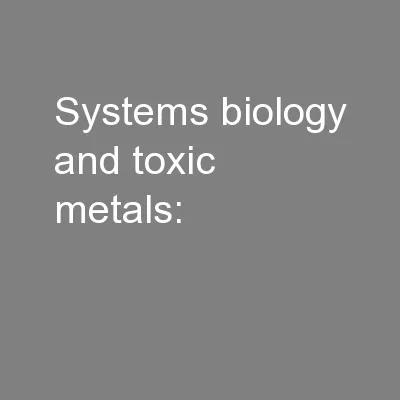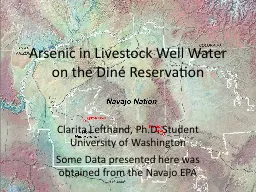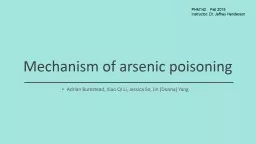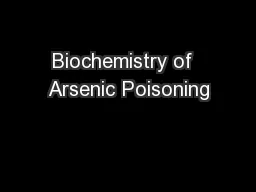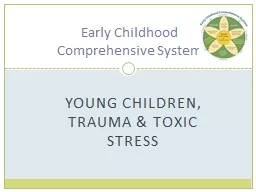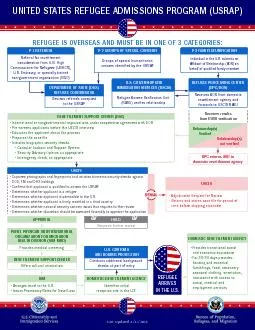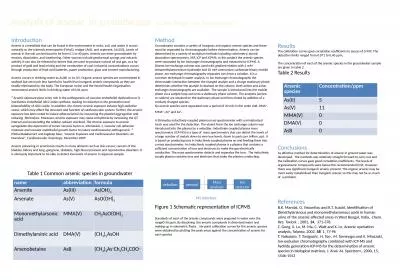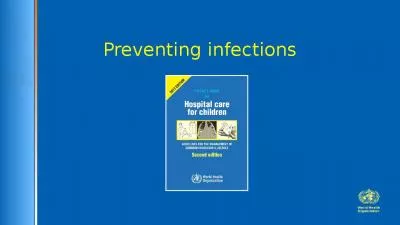PDF-PREVENTING DISEASE THROUG H HEALTHY ENVIRONMENTS EXPOSURE TO ARSENIC A MAJOR PUBLIC HEALTH
Author : danika-pritchard | Published Date : 2015-02-19
Intake of inorganic arsenic ov er a long period can lead to chronic arsenic poisoni ng arsenicosis Effects whic h can take years to develop depending on the level
Presentation Embed Code
Download Presentation
Download Presentation The PPT/PDF document "PREVENTING DISEASE THROUG H HEALTHY ENVI..." is the property of its rightful owner. Permission is granted to download and print the materials on this website for personal, non-commercial use only, and to display it on your personal computer provided you do not modify the materials and that you retain all copyright notices contained in the materials. By downloading content from our website, you accept the terms of this agreement.
PREVENTING DISEASE THROUG H HEALTHY ENVIRONMENTS EXPOSURE TO ARSENIC A MAJOR PUBLIC HEALTH: Transcript
Download Rules Of Document
"PREVENTING DISEASE THROUG H HEALTHY ENVIRONMENTS EXPOSURE TO ARSENIC A MAJOR PUBLIC HEALTH"The content belongs to its owner. You may download and print it for personal use, without modification, and keep all copyright notices. By downloading, you agree to these terms.
Related Documents

